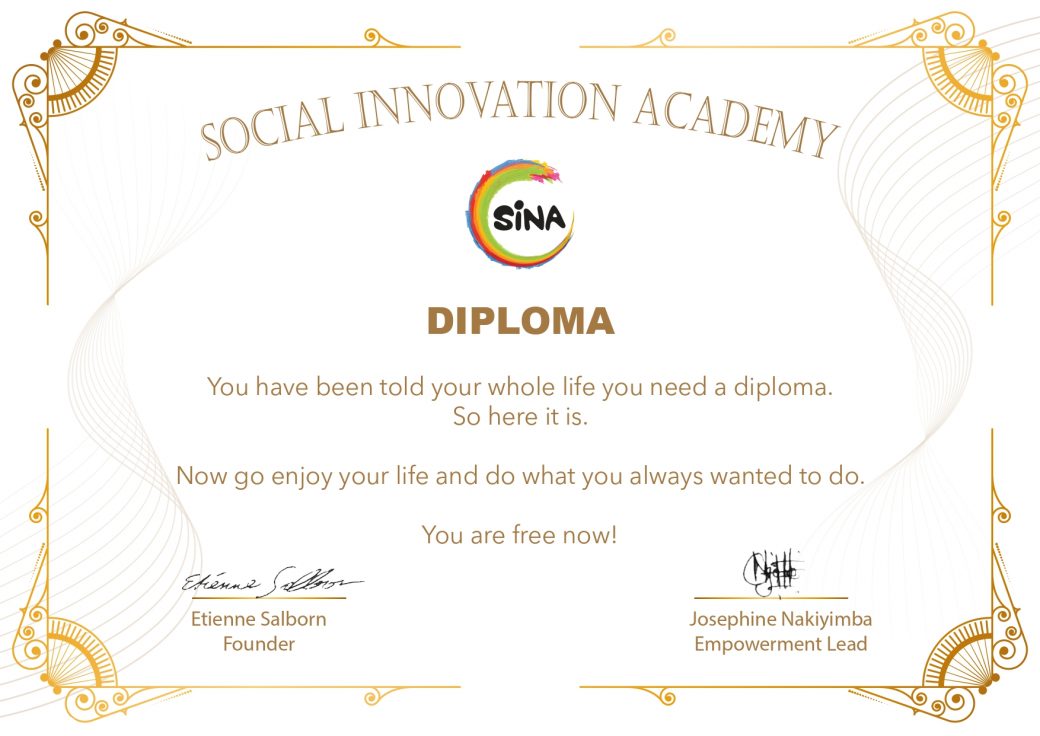
About the Project
SINA Communities revolutionize failing education of refugees and marginalized youth and tackle the resulting unemployment in Sub-Saharan Africa. SINA Communities are self-organized and free-sponsible learning spaces, where disadvantaged youth from 16 to 29 years unleash their full potential for positive change as social entrepreneurs. The power of education lies in the hands of the learners who create new solutions to local problems and build dignified lives. All SINA Communities share best practices and collectively unfold the evolutionary purpose of the SINA model, which won the 2018 UNHCR NGO Innovation Award and the 2019 Pan African Award for Entrepreneurship in Education.
Context and Issue
Sub-Saharan Africa hosts a large percentage of the world’s refugees and displaced people. Over 18 million people are of concern to the UNHCR, and the majority are children or youth who lack opportunity and prospects and are out of school. A lack of opportunities and jobs is fueling instability and has led to millions of refugees in a vicious circle perpetuating poverty. Many refugees are passive recipients of assistance, often seen as a burden to the already struggling local economies rather than an opportunity.
Solution and Impact
In SINA Communities, refugees and marginalized youth are actively creating their own future with solutions to the most pressing social and environmental challenges around them. This is happening through self-organization with distributed authority and in a cost-effective way. With less than 1,000 USD per month, a SINA Community of 50 – 70 scholars creates a future for themselves. A five-step empowerment process supports SINA scholars’ self-development of personal and professional skills to create their own solutions and social enterprises. The youth are supported to let go of self-limiting conceptions to discover their abilities and nourish their dreams to build successful lives for themselves and help their communities do the same. A “freesponsible” approach lets scholars learn the skills needed for their own enterprises by taking up responsibilities within a SINA Community. Scholars often start to understand their past as a strength rather than a subject of shame. Holacracy is used as a tool that goes beyond selected empowerment to make everyone as powerful as possible and a leader and follower at the same time. It intrinsically motivates all members with full ownership, replacing a top-down predict-and-control paradigm with a new way of dealing with complexity. The most significant achievement has been the transformation in the SINA scholars themselves. Some, who seemed to have given up on life after displacement or resorting to coping mechanisms such as drugs or alcohol, found a new purpose in life and gained the skills to create a social enterprise that often supports others as well. Scholars have found meaning in life. James Bwinika, a refugee in the Nakivale Refugee Settlement, summed it up by saying: “I’m living my dreams and not dreaming my life.” The first SINA Community brought a proof of concept in 2015 and the model has since been successfully replicated by beneficiary youth in Uganda, Zimbabwe, the Democratic Republic of Congo and Kenya. Within five years, the SINA Community in Mpigi, Uganda, enabled 36 social enterprises to be founded, which created 164 new jobs. With on average 4.7 people per household in Uganda, the livelihood of 770 people has been secured. Examples of social enterprises range from organic mosquito-repellant soap to construction with recycled plastic bottles or a flooring material made from plastic bags and eggshells. Barack Obama, Ban Ki-moon and the Queen of England have recognized members of the SINA Community and some have also been featured on BBC and CNN because of international recognitions such as the African Business Heroes, Anzisha Prize, or the 2020 UN-Habitat Scroll of Honour Award.


